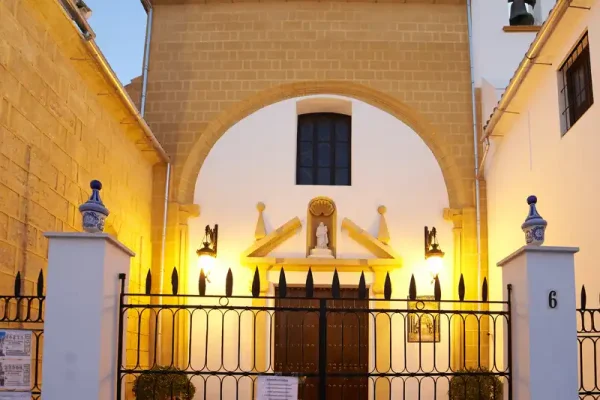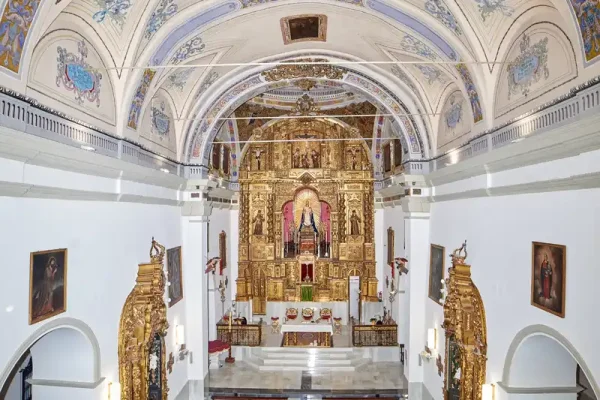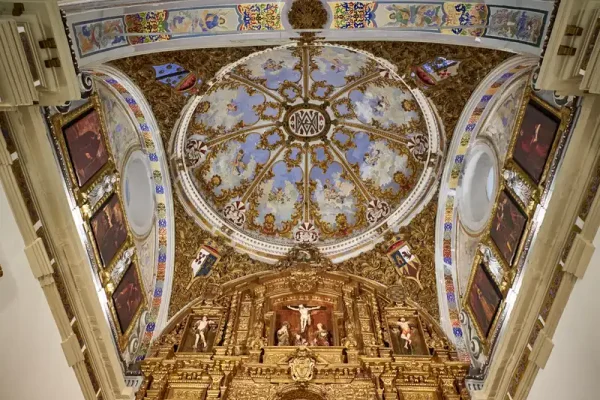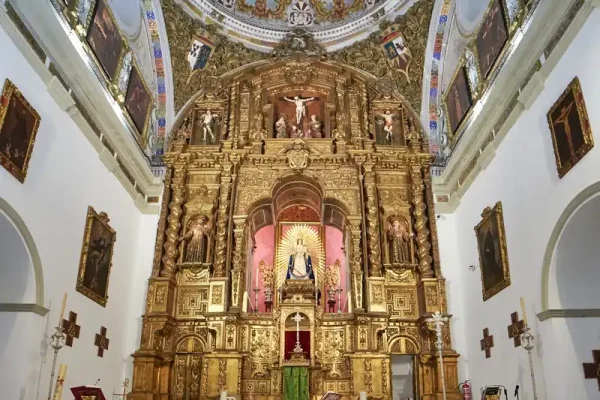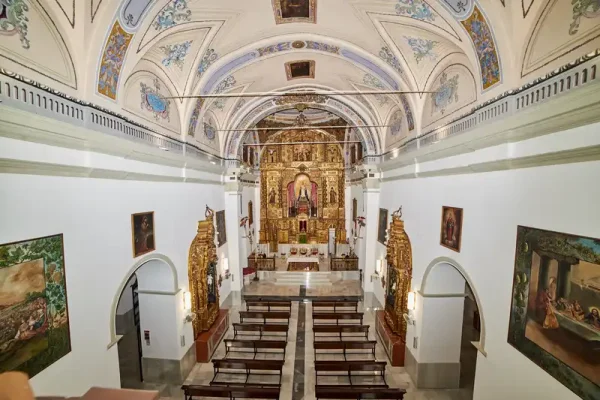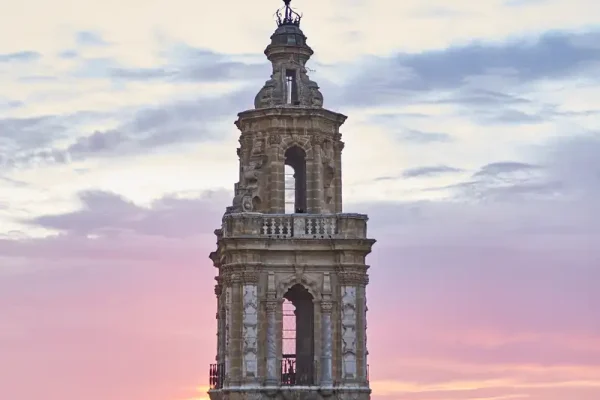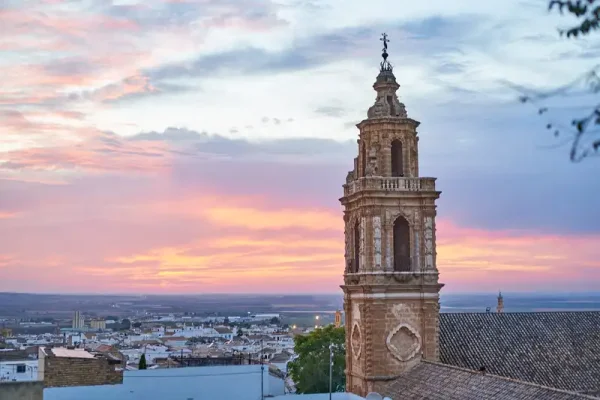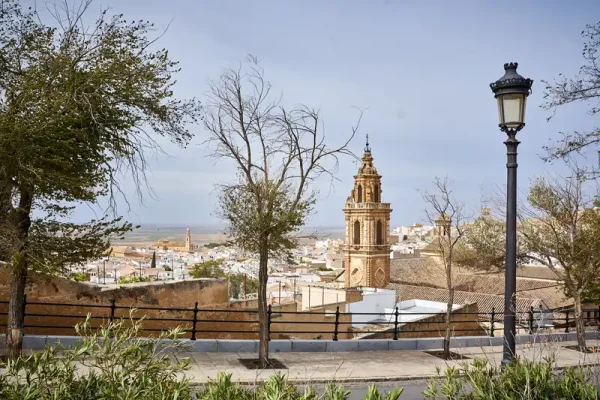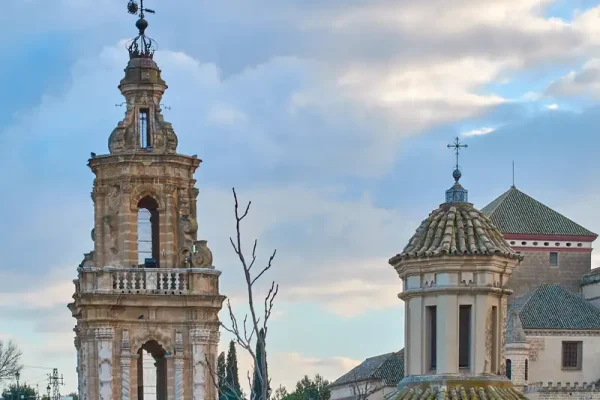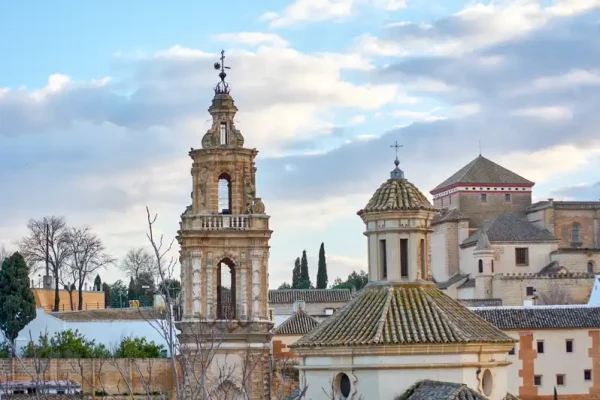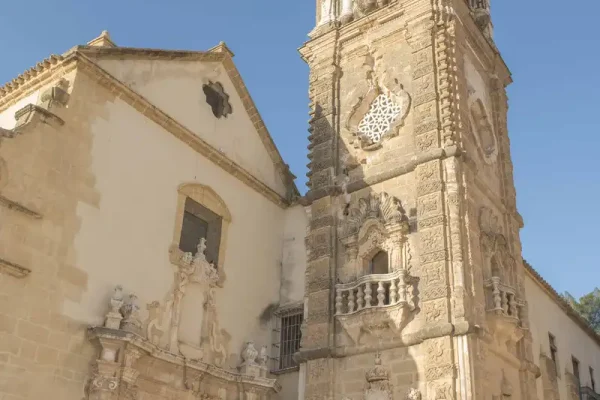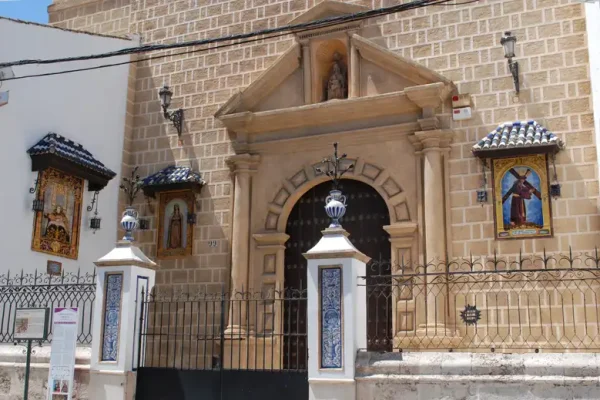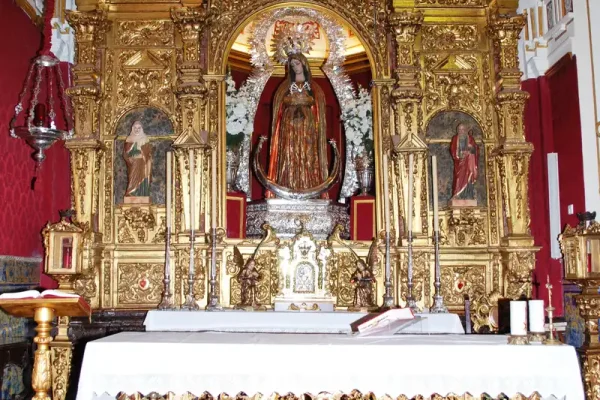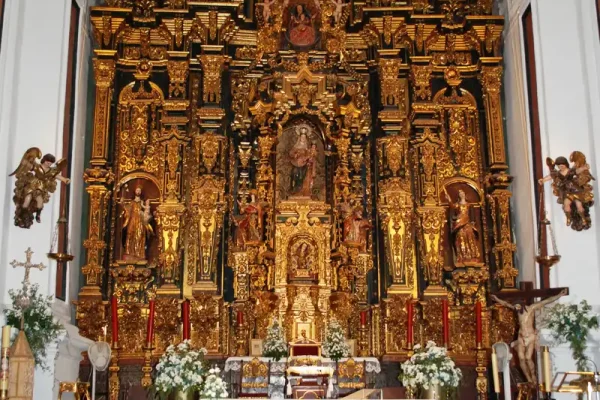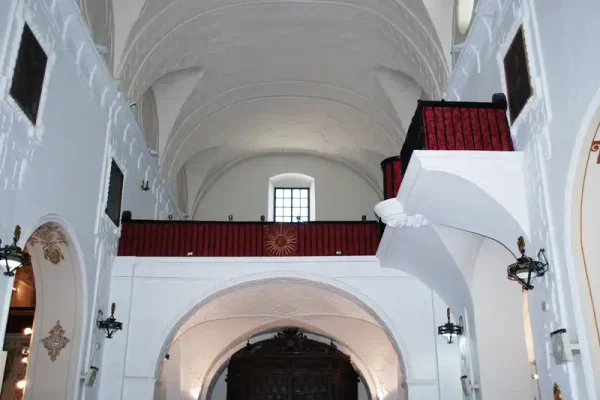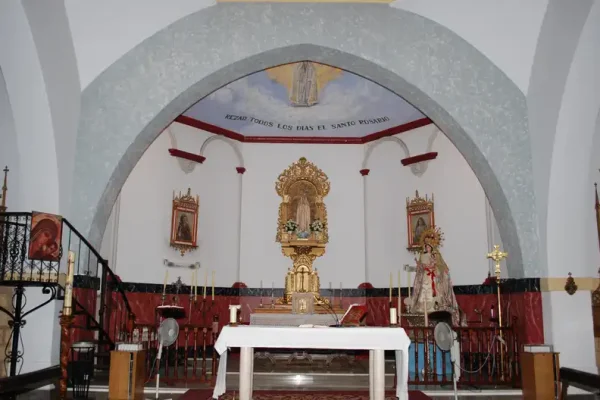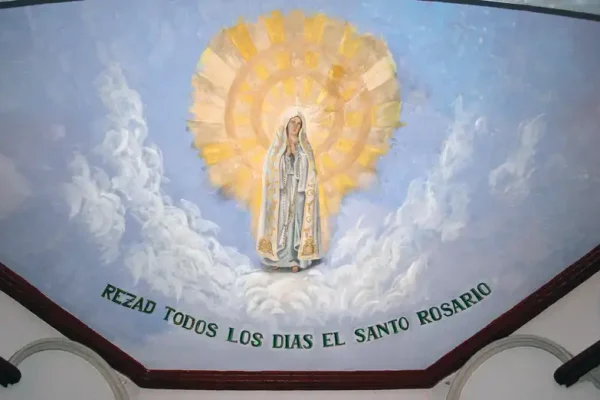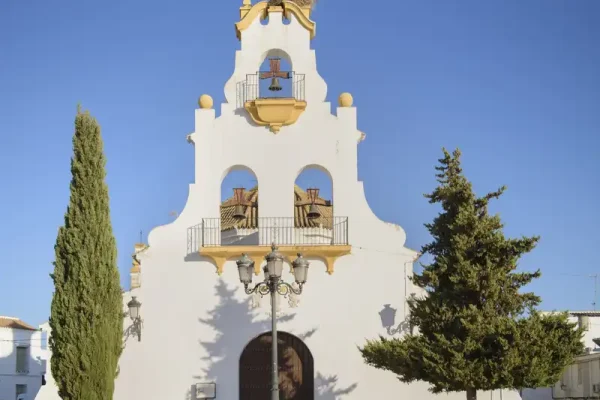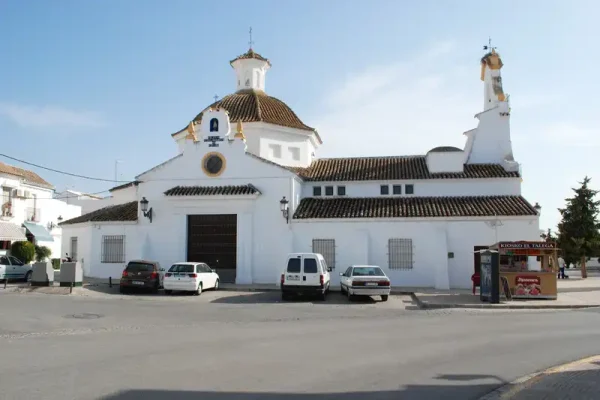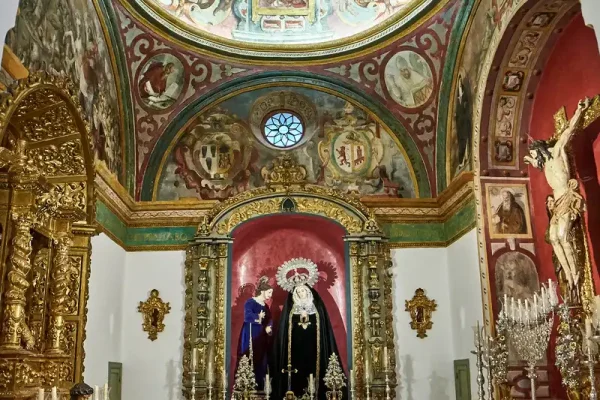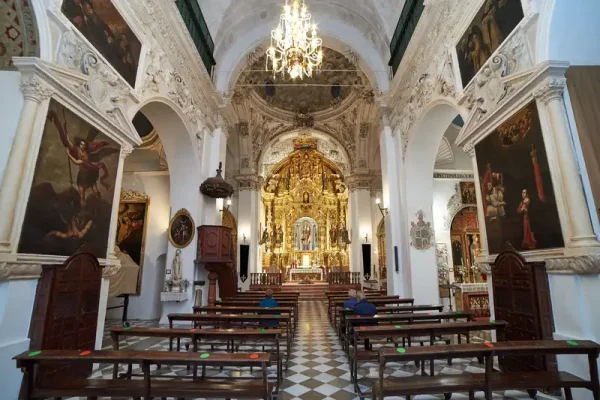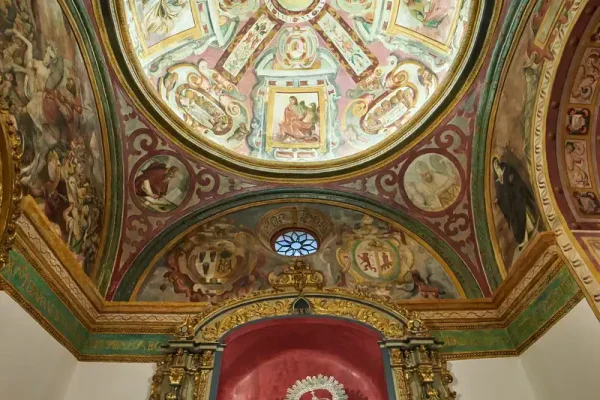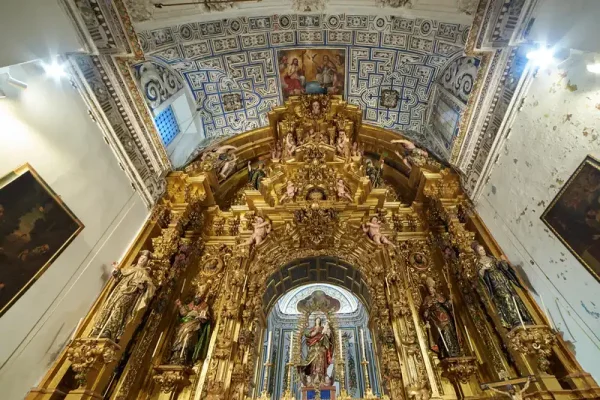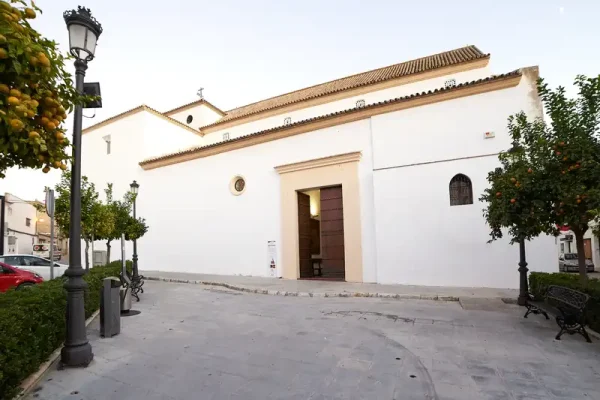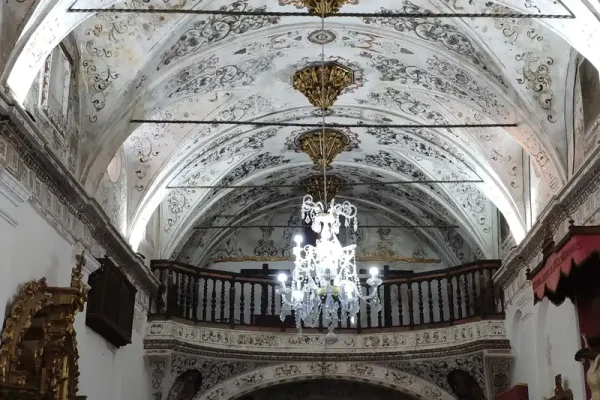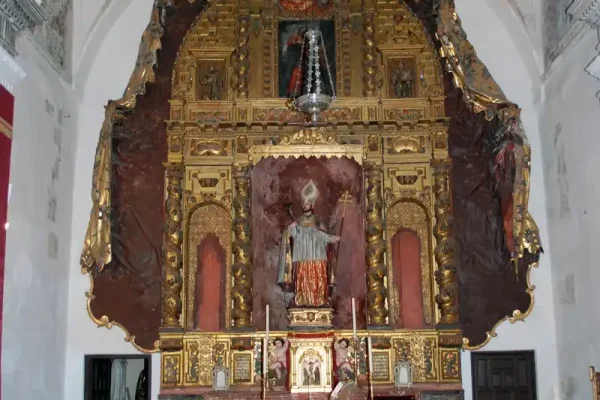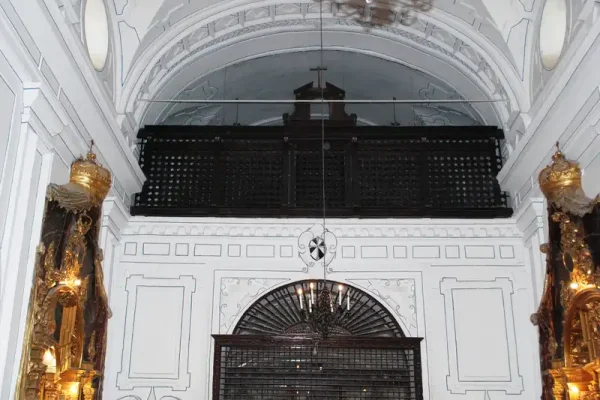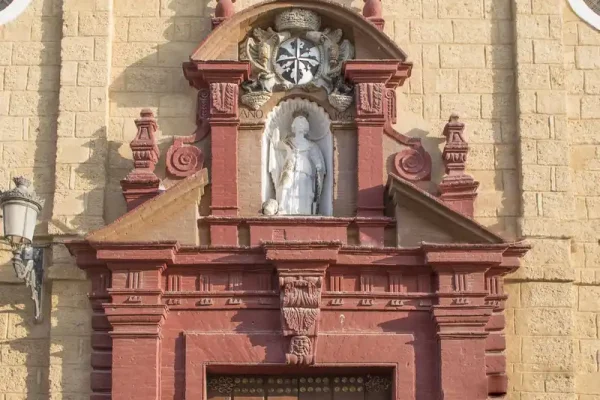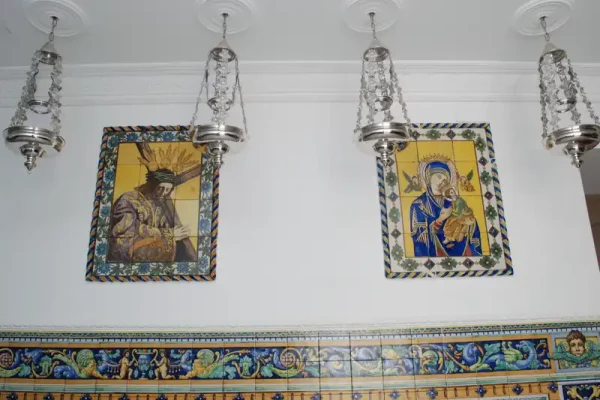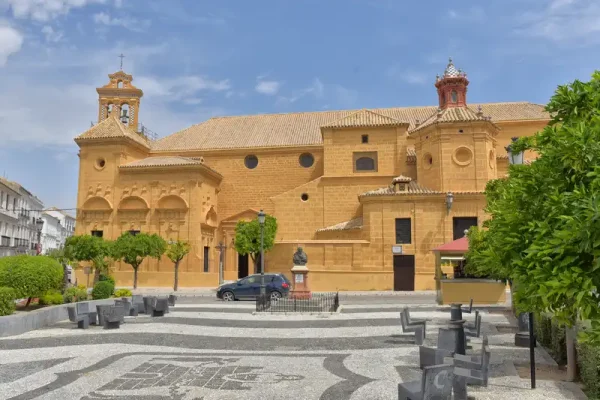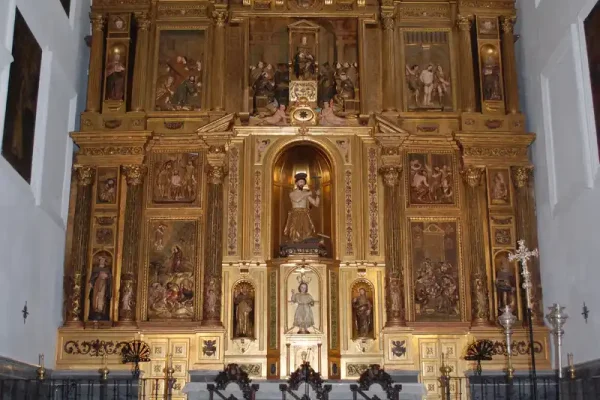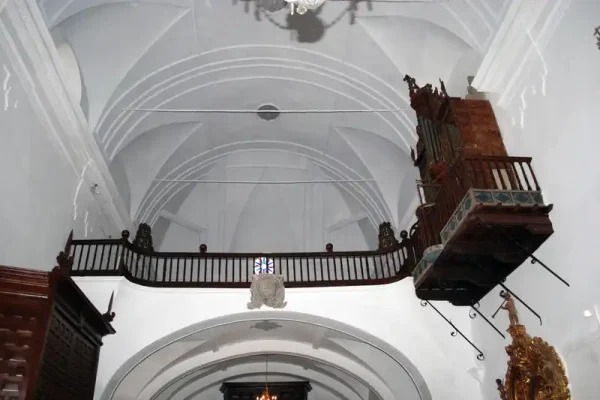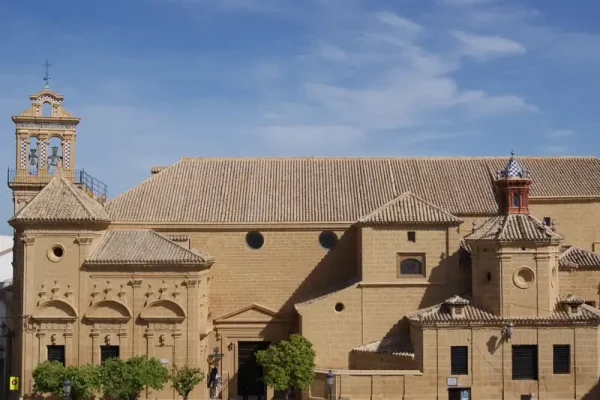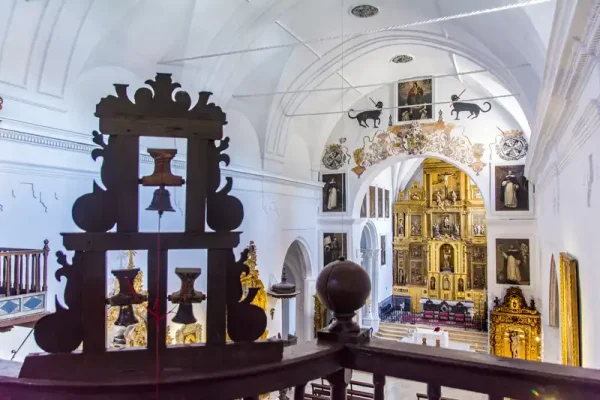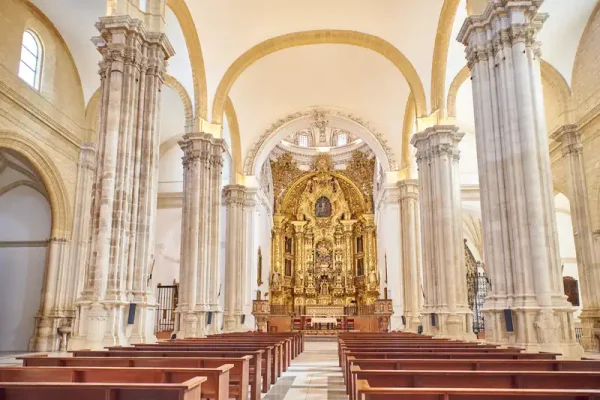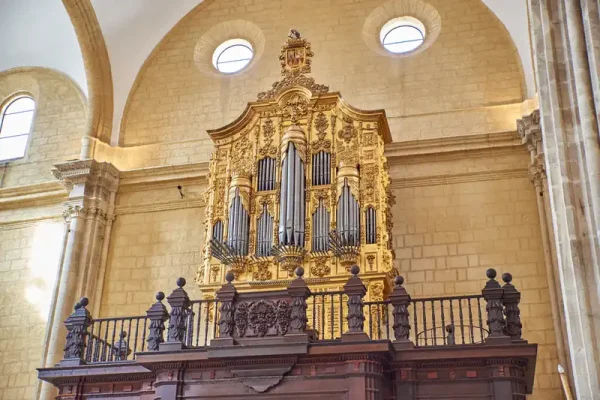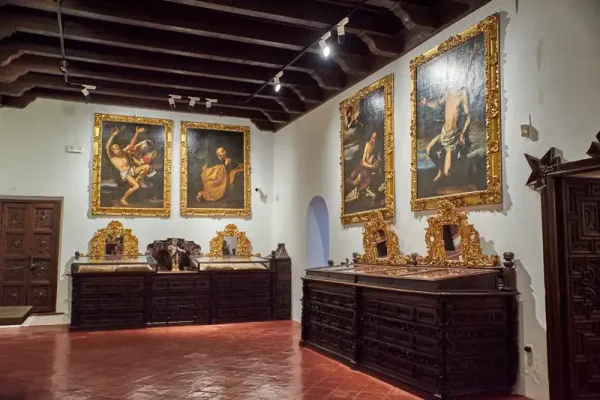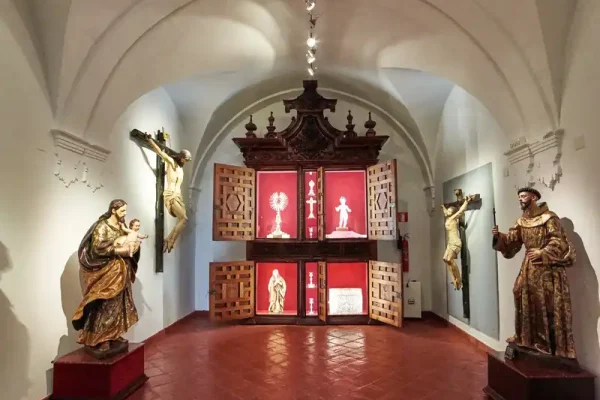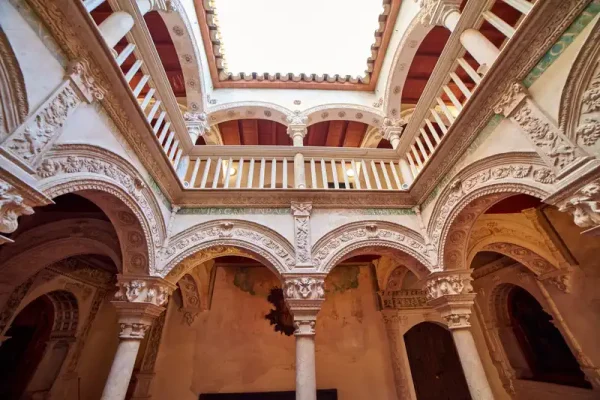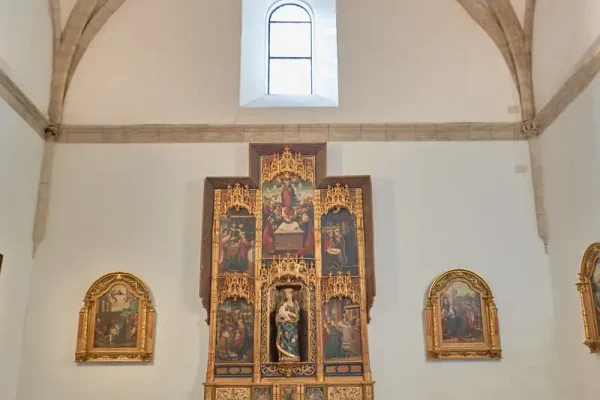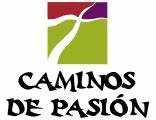


- Church of Our Lady of Consolation
- Church of Our Lady of Mercy
- Church of Our Lady of Victory
- Church of Our Lady of the Rosary of Fatima
- Church of Saint Augustine
- Church of San Carlos El Real
- Church of Saint Catherine
- Church of Saint Clare
- Church of Santo Domingo. Parish Church of Our Lady of the Assumption
- Distinguished Collegiate Church
Church of Our Lady of Consolation
Dating back to the 16th century and renovated in the 17th and 18th centuries. It originally belonged to the Third Order of Saint Francis and is currently a parish church.
The church was built in the 16th century, with Baroque alterations carried out in the 17th and 18th centuries. Its interior consists of three naves separated by pillars and covered with barrel vaults, while the main chapel has a semi-spherical vault resting on pendentives. The church was probably originally planned with an additional section, as evidenced by the columns partially hidden by the wall at the rear of the church.
In the presbytery stands a main altarpiece with Solomonic columns, completed in 1702 by Pedro García de Acuña, originally made for the convent of El Calvario. The central niche is flanked by estipites, elements that are repeated in the attic. The altarpiece is presided over by a dressed image of the Virgin of Consolation, patron saint of the town, who is carried in procession on 8 September.
In the left nave, at the foot, is the sacramental chapel, whose vault is decorated with 17th-century plasterwork.
Church of Our Lady of Mercy
17th-18th century. It is currently the headquarters of the School of Social Economy (FAECTA). Its church is not used for worship. Closed to the public.
The Church of La Merced, in its current location, was built in 1650, although it underwent extensive renovation in the second half of the 18th century. The friars arrived in Osuna in 1609 and initially settled in the Chapel of Santa Ana, located on the outskirts of the city. After two failed attempts, in 1637 they managed to erect their new monastery on the site it occupies today. The most specific information we have about this church dates from the 18th century, when major works were carried out on it. The architect of this costly undertaking was the Vicar General of the Order, Fray Miguel Ramón de San José, a native of Osuna. He was responsible for the reconstruction of the church, its magnificent stone façade, the erection of the tower, the Genoese marble flooring of the temple and its altarpieces. The works were carried out between 1768 and 1775, under the direction of Antonio Ruiz Florindo, who also built the house of the Collegiate Chapter in Calle San Pedro. The friars lived in the rooms adjoining the church until the secularisation of the clergy in the 19th century. Later, in the 20th century, the building was converted into a hospital. The church has a single nave with chapels on both sides. The main altarpiece, dating from 1716 and designed by Francisco María de Ceiba, was moved to the Sailors' Chapel in Seville.
At the end of the nave, high above, stands the choir, whose latticework lends it a special modesty. It is furnished with fine wooden seating carved with the coats of arms of the Order. The tower is an exceptional feature of the historic city. Made of stone and ashlar, agile and beautifully carved, its presence is magnificent. The beauty of the tower is enhanced by the fact that it forms a unique corner of art with the church's façade.
Church of Our Lady of Victory
16th century. Renovated in the 17th and 18th centuries.
The interior of the church consists of a single nave with chapels between buttresses, covered with a barrel vault and decorated with plasterwork featuring Serlian motifs. The transept has a half-orange vault resting on pendentives. It was originally the church of the Convent of the Minims of Saint Francis of Paola, and is now the Parish Church of Our Lady of Victory. The building, which was founded in 1549, was originally located on the outskirts of the town, in Las Canteras, at the end of Calle Cañada. Following the conclusions of the Council of Trent, the convents moved to urban areas. The Minims built a new building at the beginning of the 17th century, which underwent major renovations in the 18th century. At the foot of the church is a semicircular arch doorway with a niche at the top housing a sculpture of the Virgin of Victory, which also presides over the high altar (18th century). Inside the church are masterpieces of religious imagery. The magnificent full-length carving of the Virgin of Sorrows, made by José de Mora from Granada, Our Father Jesus Nazarene, a work attributed to the Roldán workshop, and the Virgin of Anguish.
Church of Our Lady of the Rosary of Fatima
Built at the expense of Osuna Town Council to serve the new neighbourhood built in the mid-20th century. It was consecrated in 1953. It is dedicated to the Virgin of Fátima, who passed through Osuna on her journey through Spain from Portugal, where the figure presiding over the high altar also comes from.
It has a single nave with a transept, with a gallery at the foot, above the portico that leads to the temple and on which stands the belfry with two bell towers. Originally, it was built with three openings, two of which, those at the ends, are now blocked. This alteration breaks up the original pyramidal composition of the façade.
Church of Saint Augustine
16th-17th century. Former Augustinian convent.
Don Juan Téllez Girón was also the founder of the Augustinian Convent in Osuna. Its architecture is particularly interesting because it is the only clear example in Osuna of the type of Jesuit church designed by the school founded in Rome by Vignola when he built the Church of the Gesù. Construction of this church began at the end of the 16th century and continued throughout the following century. The main façade features a semicircular arch between attached columns, topped with a niche.
Its architecture is among the most interesting in Osuna. Construction of this church began at the end of the 16th century and continued throughout the following century. The main façade features a semicircular arch between attached columns, topped with a niche.
Church of San Carlos El Real
17th century. Former Jesuit Convent.
The Jesuits arrived in the city in 1612, initially settling in the premises of the old Hospital de la Encarnación. In 1615, they quickly acquired the necessary properties for the construction of their new church between Maese Diego, Hornillos and Sevilla streets. Three years later, following the plans drawn up by Pedro Sánchez, work began on the convent of the Society, which would be transformed by various interventions in the 18th century. The Jesuits were expelled by a Royal Pragmatic Decree issued in 1767. When they left, the convent was abandoned and the church, although not lost, was stripped of its most interesting works, with its main altarpiece ending up in the parish church of El Saucejo. Everything became the property of the State – hence the nickname Real (Royal) – and was ceded to the Economic Society of Friends of the Country of Osuna and, after its dissolution, to the Town Council. It was used as a primary school and, since 1989, has housed the Casa de la Cultura (House of Culture). Its 18th-century façade is not external, as it is located in a vestibule that also gave access to the former Jesuit school. This unusual situation was caused by the closure and inclusion in the convent of a narrow street onto which the main façade opened. It is built in polychrome marble and decorated with estipites.
The interior of the church has a single nave covered with a barrel vault. In the presbytery there is a Baroque altarpiece from the last third of the 17th century, gilded in 1674, which comes from the ruined convent of San Francisco. It features images of Our Lady of Sorrows and Saint Anthony of Padua on the side aisles, while the central aisle is occupied by a sculpture of Saint Charles Borromeo, patron saint of the church.
Church of Saint Catherine
16th-17th century. Currently not in use for worship. Closed to the public.
The Dominican convent of Santa Catalina Mártir was founded on 8 May 1558 at the request of Don Juan Téllez Girón, who died the following day. It is very horizontal, with a practically blind façade. It has two doorways, as was usual in religious convents. The main doorway is made of brick, completed in 1664, and houses an image of Saint Catherine next to the wheel of martyrdom in the niche that breaks the pediment.
Its church was built during the 17th century, although the structure was transformed in the 18th century. Its single nave is covered with a barrel vault and the main chapel with a semi-spherical vault on pendentives. The main altarpiece is Baroque, commissioned from the woodcarver Juan Guerra in 1765. It features sculptures of Saint Michael and the Imposition of the Chasuble on Saint Ildefonso on the side aisles and Saint Catherine in the centre. The attic features sculptures of Saint Francis and Saint Dominic framing a crucifix. The walls of the church are covered with six 18th-century Baroque altarpieces. At the foot of the nave is the choir, notable for its highly original seating. The sacristy of the church is located opposite the entrance door and is covered with an 18th-century tile skirting board, similar to those in the Monastery of La Encarnación, depicting scenes of hunting and bullfighting.
Church of Saint Clare
16th century. Currently not used for worship. Closed to the public.
This convent was founded by the wife of the 4th Earl of Ureña, María de la Cueva.
The date of its foundation is 1550. The convent was originally located in the southern part of the town, but the site did not seem ideal for the nuns, who in 1559 exchanged it with the 4th Count of Ureña for an orchard, a nearby site, water and a stream that bordered the monastery's own houses, as well as the mills, stables, wine cellar and other neighbouring houses on Calle de la Huerta, properties that were valued equally. The church has a single nave with a chapel, the largest; the altars are located on both side walls. Its main altarpiece is Baroque and was presided over by a fine carving of Saint Clare, which is now located in the Collegiate Church. The Poor Clares also left a pulpit, which is one of the heaviest but a magnificent work of detailed and polychrome decoration.

Church of Santo Domingo. Parish Church of Our Lady of the Assumption
16th century. Rebuilt in the 17th and 18th centuries. Restored in the early 21st century. In 1531, the 4th Earl of Ureña handed over the old chapel of San Sebastián and the adjoining hospital to the friars of the Order of Preachers so that they could found their convent. It seems that the Count stipulated that the chapel should not be demolished but absorbed into the new church. Its final construction was completed on 7 March 1547. Although it was built in the 16th century, some alterations were made in the 17th and 18th centuries.
It has two façades. The interior consists of a single nave covered with a barrel vault that replaces a Mudejar coffered ceiling that has disappeared. The chancel rises slightly above the nave and is covered with a ribbed vault. On either side of the main chapel are two side chapels, covered with domes on pendentives.
The main altarpiece, consisting of a bench, two sections with five rows supported by Corinthian columns and an attic, was commissioned by Diego de Velasco and Jerónimo Hernández in 1582. It is presided over by a sculpture of Saint Dominic in penance. Of great interest are the two altarpieces with panels by Antonio de Alfián, commissioned in 1564. Of these, the one depicting the Virgin of Bethlehem preserves the sculptural work of Lorenzo Meléndez. The choir retains a 27-seat choir stall with backs decorated with reliefs of Dominican saints, dating from the 17th century. The organ dates from the 18th century. In addition, in the upper part, you can visit a museum of sacred art with valuable pieces belonging to the parish.
Distinguished Collegiate Church
It was founded in 1535 by Juan Téllez Girón, 4th Count of Ureña, when he obtained a papal bull allowing the parish church to also become a collegiate church. The temple was built on the site of the Castle Church, which had been completely destroyed by fire. The exterior of the church is striking for its severity. The church is built with ashlar stone extracted from the quarries of Osuna. On the main façade, four square buttresses rise up as the main elements of its beautiful doorway. On the left side stands the tower, which was begun in 1914 and is still unfinished.
Three doors provide access to the Collegiate Church. There are two others that have been blocked up since the 18th century, located at the ends of the side naves. The Puerta de la Cuesta door opens opposite the Monastery of La Encarnación and provides direct access to the Gospel nave. The door that connects to the Epistle nave is called the Puerta del Sol.
The interior of the Collegiate Church can be accessed through the small Patio del Panteón de los Duques de Osuna or Holy Sepulchre, which was built between 1544 and 1555 and is one of the most beautiful examples of Spanish Renaissance architecture. Two cloisters are carved on stone columns, whose segmental arches rest on large abaci decorated with grotesques. On the ground floor, the arches are separated by Ionic pilasters inspired by Plateresque style. The walls feature 16th-century paintings, with the Last Supper as the central motif, which are scheduled for restoration. Beyond the courtyard is the Sacristy of the Pantheon, a small, elegantly designed room with Plateresque decoration and a polychrome coffered ceiling in green and gold. The sacristy leads to the Chapel of the Virgin of Granada, a work attributed to Guillén Ferrant and an exceptional piece from the 16th century.
The Pantheons are built beneath the Collegiate Church and the Chapel of the Holy Sepulchre. They consist of several rooms or chapels, called San Marcos, Nuestra Señora del Reposo or Belén, Galería and Capilla del Calvario or De Profundis. Through a magnificent Plateresque doorway, we pass from the Pantheon to the Collegiate Church. The first thing we see is the Chapel of the Immaculate Conception, whose main ornament is an altar of Christ of Mercy, which houses a magnificent carving of Christ on the Cross, the work of Juan de Mesa, made in 1623. The altarpiece presiding over the chapel is dedicated to the Immaculate Conception.
From the Chapel of the Immaculate Conception, you can access the interior of the church, which has a rectangular floor plan with three naves and nine chapels: the Main Chapel, the Tabernacle Chapel, the Chapel of Our Lady of Antigua, the Chapel of Souls, the Chapel of Saint Peter, the Chapel of Our Lady of the Kings, the Baptismal Chapel, and the Chapel of Saint Anne. They contain magnificent altarpieces, images, and paintings by renowned artists. The museum is accessed through a door, also in the Plateresque style, built in the mid-16th century. Its rooms are the former sacristy and the adjoining rooms. Inside its four rooms, it houses works of great importance, such as paintings and ornaments by important artists from the 16th to 19th centuries. Among the paintings, San Jerónimo y el Ángel del Juicio (Saint Jerome and the Angel of Judgement), Martirio de San Sebastián (Martyrdom of Saint Sebastian) and Martirio de San Bartolomé (Martyrdom of Saint Bartholomew) stand out, all of them painted by José de Ribera ‘El Españoleto’ in the 17th century.

